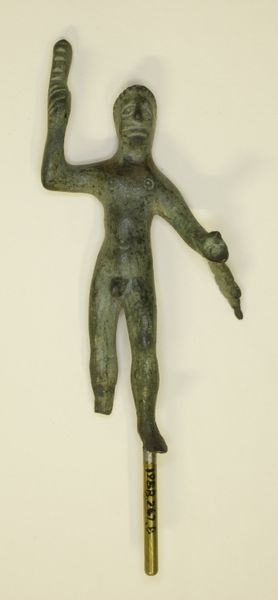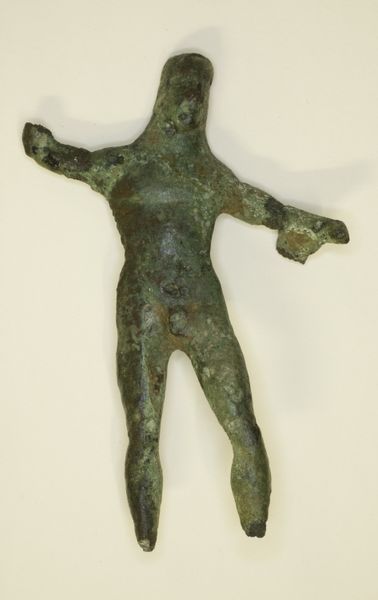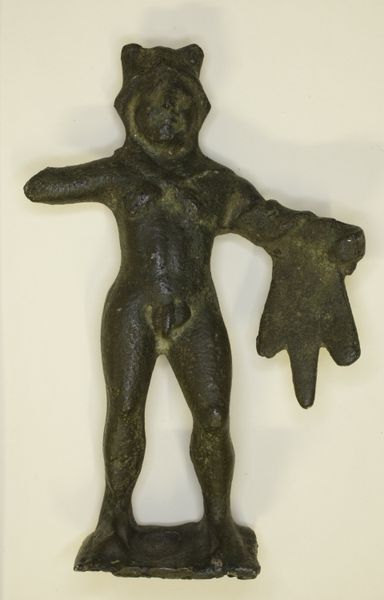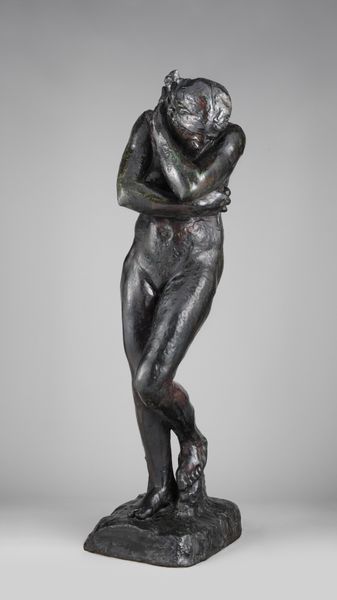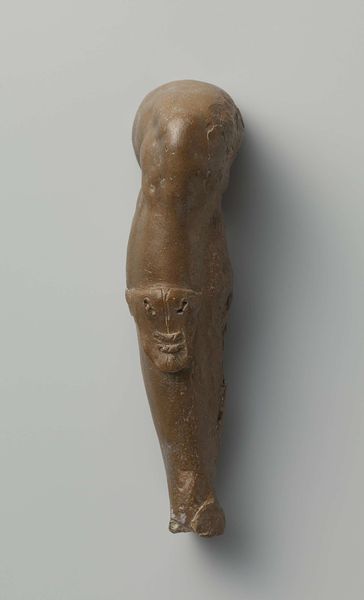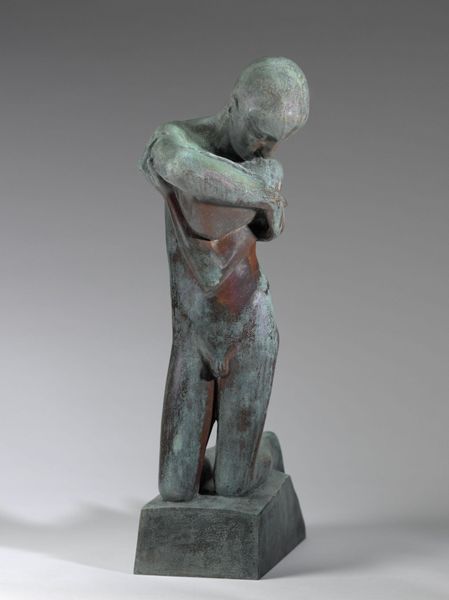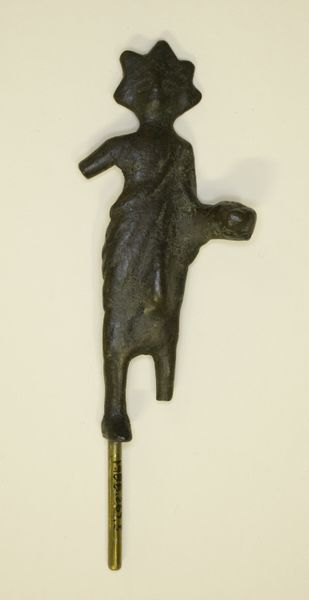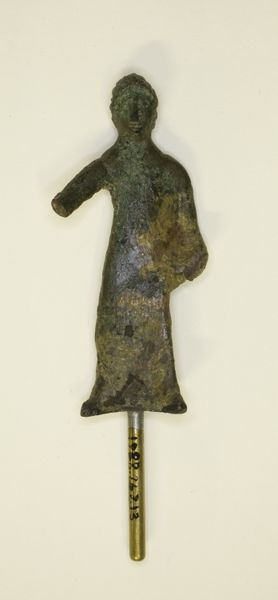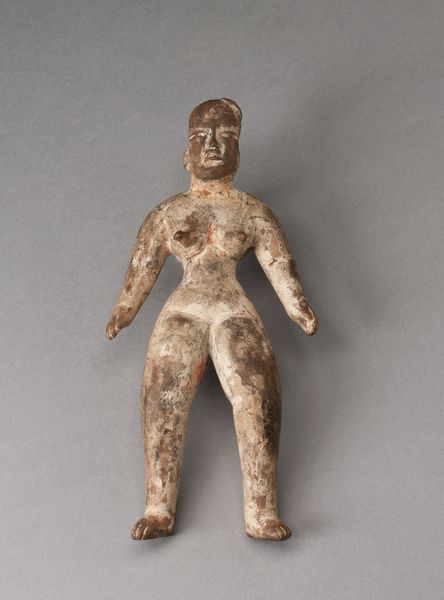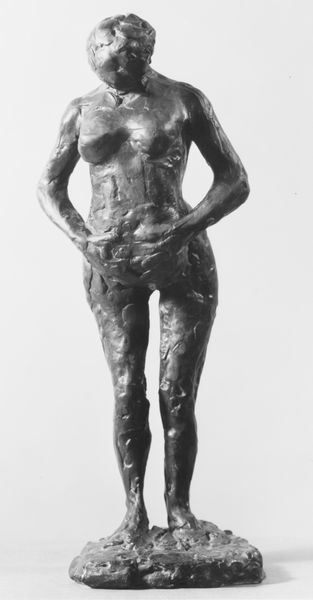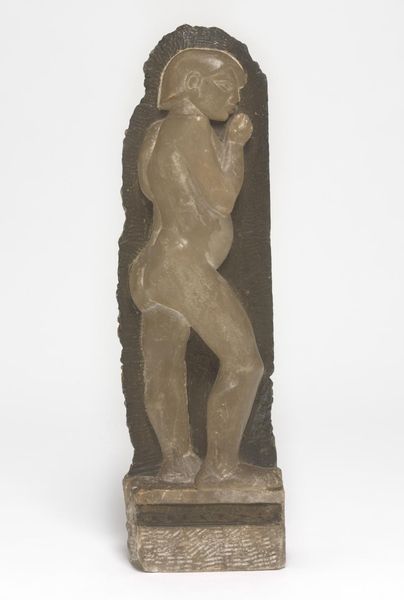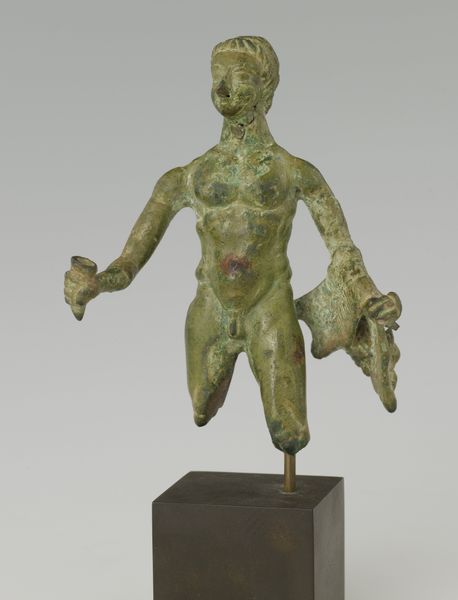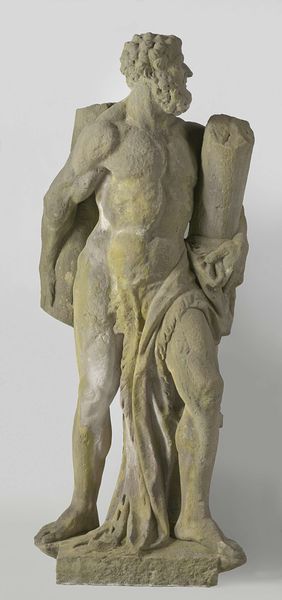
bronze, sculpture
#
sculpture
#
greek-and-roman-art
#
bronze
#
figuration
#
ancient-mediterranean
#
sculpture
#
nude
Dimensions: 9 × 4 × 1.5 cm (3 1/2 × 1 1/2 × 1/2 in.)
Copyright: Public Domain
This small figure of Herakles was cast in bronze by an Etruscan artist sometime in antiquity. Bronze casting is an indirect process, where the figure would first have been modeled in wax, then invested in a clay mold, which was heated to melt the wax and then filled with molten metal. Consider the social implications of this method. Bronze-casting demands both raw materials, like copper and tin, but also a concentration of skilled labor. Its creation speaks to a developed economic system, with both mining and workshops to refine the ore. The figure's surface shows a beautiful green patina, evidence of its age and burial in the earth. Yet, the remnants of the casting sprue are also visible beneath its feet, which provide us with a direct connection to the artist who made it. Appreciating this statuette means not only seeing it as an image of a hero but also understanding the complex manufacturing processes involved in its creation.
Comments
No comments
Be the first to comment and join the conversation on the ultimate creative platform.
